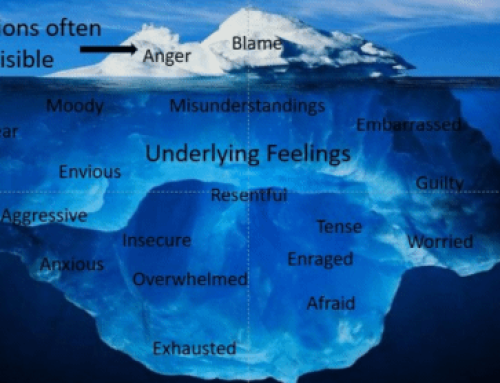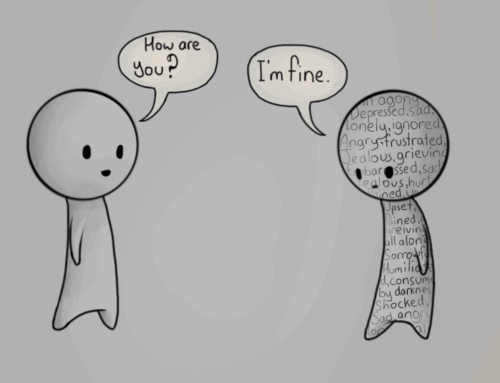3 Ways to Deal with Difficult Feelings
June 20, 2021
Categories: Emotion
No one enjoys feeling depressed or anxious. When you experience a difficult emotion, the natural tendency is to want to STOP feeling that way. In other words, you want to do something to avoid or change the feeling.
This is a natural reaction, but it has the potential to backfire. Here’s what I mean: When you experience an emotion like sadness, fear, or anger, it’s not usually in your conscious control. Most of the time, we didn’t bring up the emotion on purpose. Instead, it was a reaction to something that happened in our environment. In a similar way, it can be tough to “will ourselves” to try to change our emotional experience. We can try, but it usually doesn’t work.
Furthermore, sometimes the very act of trying to change our emotional experience can actually increase the emotion and make our situation worse. If we’re trying hard NOT to feel sad, for example, we are still focusing on the emotion of sadness, and the things that are making us feel sad. This increased focus on the sadness can actually increase our sadness, instead of having the effect we want (i.e., lowering our sadness).
So, what’s the alternative? If we can’t will ourselves to change a difficult feeling, are we stuck? Are we doomed to feel sad, angry, or scared forever?
3 Ways to Deal with Difficult Feelings
The good news is that there are some effective ways to deal with difficult feelings, although none of them offer a “quick fix” to rid yourself of the difficult emotion.
Option #1: Accept the Difficult Feeling
This first option might seem paradoxical. Why would I want to ACCEPT feeling sad, angry, or scared? I know it seems weird, but sometimes truly accepting an emotion can help to dissipate it. Because you aren’t focusing on it as much, it has the tendency to reduce its intensity. The reality is that feelings come and go, and become stronger or weaker over time. We can get in trouble, however, when we try really hard to change a feeling. Accepting a feeling involves simply noticing our emotional experience and not trying to change it. Over time, see if it increases or decreases, like waves on an ocean.
Option #2: Understand the Difficult Feeling
The second option is to be curious and try to understand the difficult emotion you are experiencing. Sometimes we might feel sad, angry, or scared, and not understand why. What’s the context? What is happening in your life right now? Did anything happen right before you started experiencing the emotion? If you can get a sense of what happened right before the difficult emotion came up for you, you might be able to change your situation and see if the feeling changes also. Understanding your emotion can also help you to accept it. For example, if you realize that you are feeling sad because someone close to you has died, this could help increase your empathy and understanding for yourself (because it’s normal to feel sad after losing someone close to you).
Option #3: Change Your Thoughts or Behaviors
Cognitive-behavioral therapy (CBT) is one of the most well-researched types of therapy. Basically, the idea behind CBT is that your thoughts, feelings, and behaviors are all connected. If you’re feeling sad, for example, there might be some thoughts (e.g., I’m no good) or behaviors (e.g., sitting alone in my apartment) that go along with it. It’s pretty hard to just change a feeling, but you might be able to adjust your thoughts or behaviors more easily.
To start, track your thoughts, feelings, and behaviors throughout the day. Try to do it 3 times per day—in the morning, at lunchtime, and before you go to bed. On a piece of paper, first write out what you are feeling. Then write down anything you are thinking about. Finally, write down what you are doing. After a week or so of doing this, see if you can see any connections between your thoughts, feelings, and behaviors. What are you thinking and doing when you are feeling happy? What about when you are feeling sad, angry, or scared?
The final step is to identify some “target” thoughts or behaviors. If you know that having certain thoughts get you down, for example, could you try to replace those thoughts with other, more positive thoughts? If you know that certain behaviors are associated with feeling down, could you replace those behaviors with other, more positive behaviors?
Discussion
How difficult or easy has it been for you to change what you’re feeling? What do you think of the 3 options for dealing with difficult emotions? What has worked for you in the past? What questions do you still have?

Related Thoughts

Subscribe To My Newsletter
Join my mailing list to receive the latest blog posts.
Receive my e-book “The Mental Health Toolkit” for free when you subscribe.





